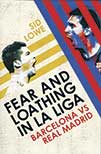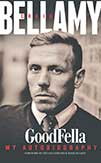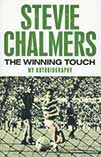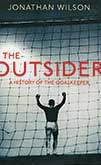{youtube}VLb3yIRA8AU{/youtube}
Search: 'Brazil'
Stories
 Barcelona vs Real Madrid
Barcelona vs Real Madrid
by Sid Lowe
Yellow Jersey, £18.99
Reviewed by Dermot Corrigan
From WSC 322 December 2013
“Barcelona good, Madrid bad” is a pretty common idea among English-speaking football fans. Even those who question the Catalan club’s “football philosophy”, or its board’s financial dealings with Qatar and Brazil, still often see Barça as purer than, and morally superior to, their rivals from the Spanish capital.
This idea can be traced all the way back to George Orwell’s Homage To Catalonia – and is just plain wrong, according to Sid Lowe’s new contribution to the growing pile of English language books on Spanish football.
Fear And Loathing In La Liga: Barcelona vs Real Madrid takes a broader approach than most, looking closely at the impact of political and cultural trends on the game, including epigraphs from writer Antonio Machado and Swansea City attacker Michu. The early 20th century poet’s quote is of “the two Spains”, a famous line referring to the pre-Civil War right-left political divide. But Lowe appears to agree more with the modern player’s preference to avoid choosing one or the other.
The strongest chapters consider the effect of the 1936-39 conflict on football and turn over some pretty widely held preconceptions. Madrid (the city) was not Franco’s base, instead it suffered the fiercest nationalist attacks. This meant Real Madrid had to stop playing official games, their ground was ruined, and their republican club president Rafael Sánchez Guerra was imprisoned when the city finally fell to Franco’s forces. Barcelona was less directly impacted by the fighting, so FC Barcelona kept playing in the Catalan Championship and Mediterranean League, then toured North America.
During the first 15 years of the dictatorship the Catalan club were also more successful, winning five La Liga titles to Real Madrid’s none. In those years the Barça boardroom was stuffed with well-connected businessmen, just as it is now. Professional football clubs – in Spain under Franco, just as in England under Tony Blair – tend to go with the political flow. Which explains Barcelona’s current embrace of Catalan nationalism.
Lowe’s impressive list of interviewees includes Alfredo di Stéfano, Johan Cruyff, Luís Figo, Zinedine Zidane and Andrés Iniesta. He uncovers new archival evidence about how Barça president Josep Sunyol died in 1936, and why Di Stéfano joined Madrid not Barça in 1953. There are also neat mentions of Barça’s (unwitting) role in the murder of Leon Trotsky, as well as Madrid’s links to the Beatles in the 1960s and Pedro Almodovar in the 1980s. It’s a rare book that discusses ETA (the Basque separatist organisation) and Michael Owen on the same page.
The weakest section is towards the end, as by now there is little new to say on José Mourinho the ex-translator versus Josep Guardiola the former ballboy. But that’s a minor quibble. We have already seen how closely Spain’s two biggest clubs have mirrored each other through the years. Real Madrid and Barcelona do not represent different strands in Spanish history, or competing political points of view, they’re just two sides of the same coin.
 My autobiography
My autobiography
by Craig Bellamy
Sport Media, £18.99
Reviewed by Rob Hughes
From WSC 320 October 2013
As his old boss Mark Hughes points out in the foreword to GoodFella, Craig Bellamy has a lot of strengths but diplomacy isn’t one of them. It’s an approach that’s landed him in all shades of bother throughout a nomadic career, from the “nutter with a putter” spat with John Arne Riise to brawling with bouncers outside nightclubs. It’s all laid bare here, though the real selling point of this highly engrossing memoir (written with the Daily Mirror‘s Oliver Holt as guide) is Bellamy’s frank and often painful honesty. Especially when it comes to himself.
It’s unflattering stuff. Here is a man utterly consumed by football, driven by insecurity and a will to succeed that frequently veers into self-admonishment. Such intensity, he says, turned him into “the human snarl”. Dogged by repeated knee injuries, he’s sulky and uncommunicative, especially with his wife and kids. He admits to infidelities. And during his final days at Newcastle he becomes obnoxious and arrogant.
The watershed moment comes in November 2011, with the suicide of his idol and close friend Gary Speed. Cue a rigorous stock-take of his life and destructive personality, followed by therapy with British Olympic psychiatrist Steve Peters. Bellamy finally allows himself to let go of his rage. By then it’s too late to save his marriage but what emerges is a more forgiving, open and ultimately contented character.
Not that Bellamy was ever a footballing pariah – there are plenty of former team-mates who vouch for him both as a human being and professional – but GoodFella doesn’t hold back when it comes to those he disliked. Graham Poll comes across as a self-serving “celebrity ref”, starstruck by David Beckham and Patrick Vieira. And while Bellamy cites Bobby Robson as the best manager he ever worked with, his successor Graeme Souness is the iron fist who came in looking for a fight.
Both Rafa Benítez and Roberto Mancini are portrayed as joyless control freaks, the former an “unsmiling headmaster” with no room for spontaneity or sentiment, an attention-seeking dictator. City’s Brazilian folly Robinho is appallingly lazy, both in training and on the pitch, and a spoilt man-child when Bellamy confronts him about it.
Perhaps the most damning verdict is reserved for one-time Newcastle strike partner Alan Shearer, who is seen as a self-absorbed egotist with a yellow streak. Bellamy gleefully recounts the England man’s reluctance to leave the pitch after a game against Manchester United, knowing that Roy Keane (who’d been sent off for a Shearer-related fracas) was waiting in the tunnel. And after hearing he’d supposedly dissed him to others after moving on to Celtic, Bellamy texts Shearer directly after Newcastle’s lame FA Cup semi-final defeat in 2005: “Fucking typical of you. Looking at everyone else yet again. You need to look at yourself instead.” Shearer threatens to knock him out next time he’s in Newcastle.
All of this serves as a thoroughly refreshing antidote to the usual blandness that makes for football biographies. But GoodFella is far more substantial than just a series of delicious anecdotes. It feels like a rich confession from one of the game’s most misconstrued personalities.
 My autobiography
My autobiography
by Stevie Chalmers with Graham McColl
Headline, £19.99
Reviewed by Mark Poole
From WSC 314 April 2013
Stevie Chalmers scored the winning goal in the 1967 European Cup final. It’s still the most important goal in Celtic’s history: the goal that liberated club football’s greatest prize from its Spanish-Italian-Portuguese stranglehold for the first time and that inspired Bill Shankly to call Jock Stein immortal.
Chalmers scored 230 other goals for Celtic – including the last hat-trick in an Old Firm derby – but his career has come to be defined solely by his tap-in (team-mate Bertie Auld’s words) against Inter in Lisbon. His autobiography does nothing to change that. The middle two chapters, one for each half of that final, are where the book comes alive and Chalmers’s detailed perspective of the match is compelling reading for Celtic fans.
There are other intriguing aspects to his life and career: he almost died from tuberculous meningitis when he was 20, he only played five times for Scotland (in spite of his clear talent and scoring against Brazil) and he had a long career at the club he supported but an uneasy relationship with its most successful manager.
His perspective on Stein is interesting but no more so than many others and, perhaps unsurprisingly for a renowned gentleman, Chalmers seems reluctant to complain directly about being overlooked or played out of position.
A lot remains unsaid, leaving readers to infer much of the story. Like many of his contemporaries, Chalmers repeatedly insists that he would always rather do what was best for the team than for himself. However, it’s clear that some managers’ and selectors’ tactics and decisions (including Stein’s) still rankle with him over 40 years later, particularly his omission from the Scotland team that beat England at Wembley in 1967.
It’s a melancholy experience to intrude upon such a successful player’s feelings of loss. Stein was a notoriously hard man to read – his players’ feelings were rarely allowed to intrude on the business of winning matches – but his choices as a manager made it clear how much he valued Chalmers. The reader is left to wonder if Chalmers realises this and also if he would seem more content now if he’d made more of a fuss back then. This glimpse into a 1960s footballer’s mind is one of the more interesting aspects of the book.
The Winning Touch could have provided more of an insight into what it was like to experience Chalmers’s terrible illness, and to recover so remarkably from it. This presence of detail but absence of insight is symptomatic of other parts of the book, perhaps evidence of the adage that consummate professionals often produce mostly pedestrian autobiographies and typical of the emotional restraint of mid-century Scotsmen.
In his playing days Chalmers made the most of the chances that came his way, so it’s surprising that parts of his autobiography seem like a missed opportunity. Although it is worth reading, at least for the insight into the day when he and ten other men from the edge of the football world shocked the game’s aristocracy.
 A History of the Goalkeeper
A History of the Goalkeeper
by Jonathan Wilson
Orion Books, £20
Reviewed by Jonathan O’Brien
From WSC 314 April 2013
Of all the “name” football writers on the merry-go-round today, Jonathan Wilson is arguably the best value, even if a few of his many theories and pet obsessions tend towards the overly self-indulgent. He’s a busy man, too – running the quarterly Blizzard while producing columns for the Guardian and Sports Illustrated and roughly one book per year. The Outsider is his sixth tome since 2006, the kind of workrate that sees a lot of writers spread themselves too thinly. But Wilson’s prodigious energy doesn’t seem to dilute the quality of what he comes up with and this meticulous study of the goalkeeping art is characterised by the attention to detail that he brings to everything he writes.
Starting with a study of football in the 1800s, he demonstrates how the mere fact of being a goalkeeper has always carried with it the smell of the scapegoat. In Victorian times the position was occupied by small boys, “duffers” and “funk-sticks” (milksops who had failed to perform elsewhere on the pitch). As the years went on and the sport evolved at snail’s pace, deaths were commonplace for keepers – Celtic’s John Thomson, accidentally kicked in the head during a match in 1931, being an infamous example.
Wilson has put in plenty of air miles, heading for locales as far-flung as Brazil and Russia. The latter country, which once produced great keepers by the lorryload, has nursed a special obsession with the position since before the 1917 revolution (an assertion backed up with quotes from none other than novelist Vladimir Nabokov). Brazil, contrariwise, has had mostly white keepers due to some strange socio-racial issues – the odd exception such as Dida not withstanding. Although, as Wilson shows, English football has nurtured a similar instinctive distrust of black keepers.
African keepers, specifically, sit even lower down the food chain of perception. Two of the best, Cameroon’s Thomas N’Kono and Joseph-Antoine Bell, enjoyed a (mostly) friendly 20-year rivalry after learning from Yugoslavian legend Vladimir Beara. N’Kono was the natural, Bell the hard worker. N’Kono shone at the 1982 World Cup, got a move to Spain out of it and became an Espanyol hero. Bell had to wait until the disastrous USA 94 campaign to play in the finals, by which time he was 39 and too far over the hill to do himself justice.
Wilson’s fondness for idiosyncratic structuring sometimes weakens the book’s sense of direction. The Brazilian chapter abruptly veers into Scotland for several pages, then heads back to Brazil. Not that the material therein isn’t interesting or informative – the passages concerning the appalling bad luck that plagued Jim Leighton’s long career are particularly vivid – but layering the material in such an odd way seems unnecessarily perverse.
In the main The Outsider is a terrific history of its subject. It wears its knowledgeable perspective lightly and deftly works its vast research into the text without battering you over the head with it. Wilson can always be relied upon to come up with something a little bit different and a little bit special, and this has plenty of both.